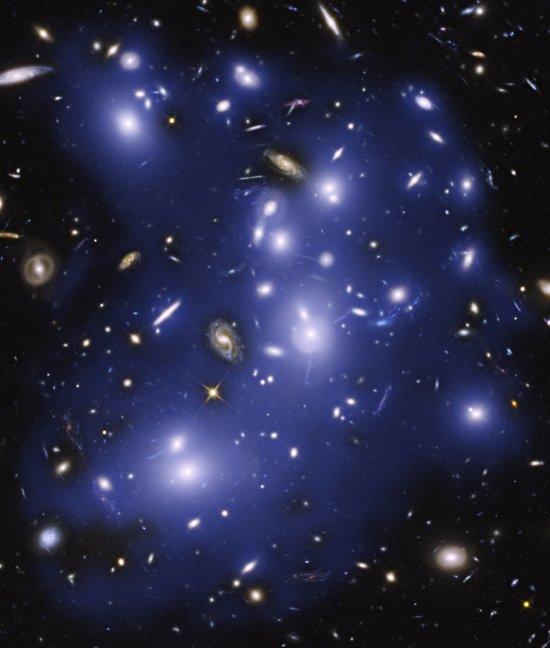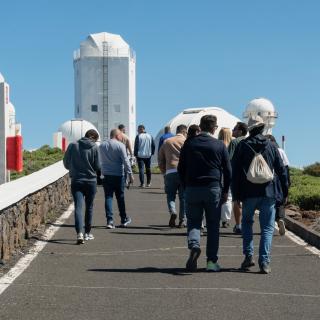The intra-cluster light, the “ghost light” in galaxy clusters, comes from stars in clusters which are not bound by gravity to any particular galaxy. According to theoretical predictions, huge tidal forces should destroy galaxies and cause stars to wander freely in the galaxy clusters. For this reason knowing more about the properties of this intra-cluster light gives us clues about the formation and evolution of clusters of galaxies. However the big problem facing astronomers who study this light is that it is very faint, and therefore difficult to observe. It must also be studied in zones well away from the galaxies in the cluster, which are not contaminated by the outer parts of any of these galaxies.
Using the deepest observations of galaxy clusters obtained thanks to the Hubble Space Telescope (HST), researchers of the Astrophysics Institute of the Canaries (IAC) and the University of La Laguna (ULL) have been able to study in detail for the first time, the properties of this light out to distances of 350 thousand light years in the cluster Abell 2744, at some 4 thousand million light years from us (z~0.3). To do this they have used data from a new survey, the “Hubble Frontier Fields”, which the HST is carrying out, and which includes images of 6 galaxy clusters which are deeper than any taken before. This study has been published in the specialized journal the Astrophysical Journal.
“This is an original piece of work which marks a “before and after” in our understanding of the formation and evolution of galaxy clusters” says Mireia Montes, the first author of the article. “Previous studies of the intra-cluster light had suffered from serious limitation in the depth and the spectral range of the observations, restricting the accuracy of the ages and metallicities derived for the stars that emit that light”.
These observations at various wavelengths (optical and infrared) are the deepest which have been performed up to now for galaxy clusters. At first, the “Hubble Frontier Fields” project was conceived in order to study very distant galaxies, to take advantage of the gravitational properties of these clusters, which act as a type of lenses (“gravitational lenses”) which amplify the small faint objects situated behind them.
“However -states Montes-, the depth of these images allows us to make a detailed study of the cluster itself, which makes them ideal for the study of the intracluster light”. Using such deep images allows tracing this light out to great distances from the galaxies in the cluster, and thus to avoid the contamination caused by the outermost parts of these galaxies. Furthermore, the combination of images at various wavelengths, from the optical to the infrared, allows us to detect the stellar populations which are causing this light.”
“The result of this study shows -explains Ignacio Trujillo, the second autor or the article- that the galaxies which could in principle be the originators of the stars which emit this intra-cluster light are very similar to the Milky Way, and that they began to disintegrate in Abell 2744 some 9,000 million years ago. The quantity of mass which is observed as the source of this light is the equivalent of the destruction of 4 to 6 galaxies like ours". This result is in agreement with the present theories of galaxy formation in which larger galaxies tend to grow by accreting smaller ones (the hierarchical model).
Scientific paper: “Intra-Cluster Light at the Frontier: Abell 2744”, in Astrophysical Journal. 794 137. Issue 2.
Authors: Mireia Montes and Ignacio Trujillo (IAC/ULL).
Contact:
Mireia Montes: mmontes_ext [at] iac.es (mmontes_ext[at]iac[dot]es).
Ignacio Trujillo: itc [at] iac.es (itc[at]iac[dot]es). Tel: 922605316
Related links:
Hubble Space Telescope Science's (STScI) news release



